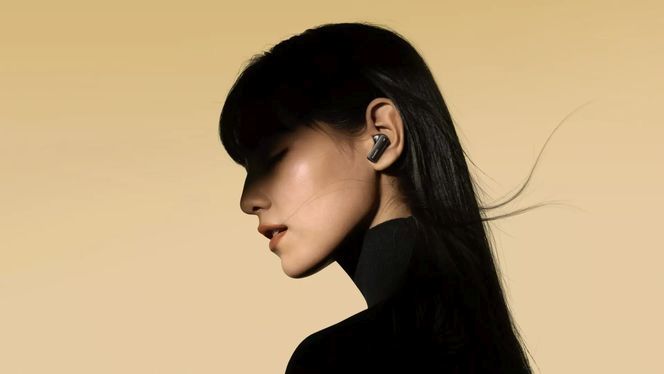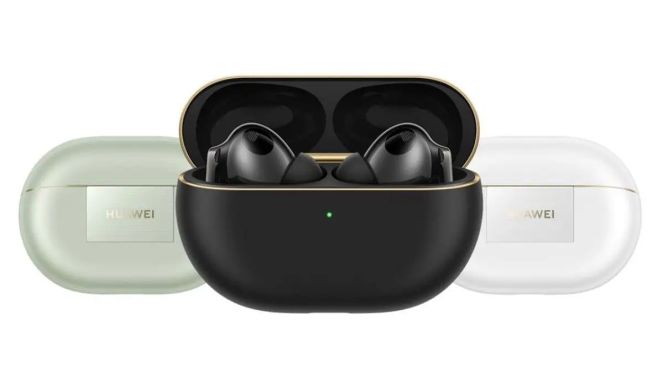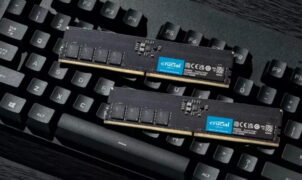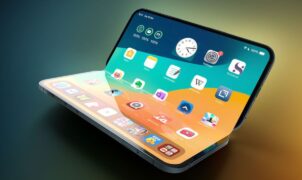TECH TEST – Huawei hasn’t updated its flagship headphones for over a year, but as 2024 draws to a close, the Freebuds Pro 4 has arrived. It was first announced in China, and just two weeks later it was released internationally.
The case and earphones of the Freebuds Pro 4 look almost identical to the Freebuds Pro 3. Our test example is black, with gold trim on the stems and around the rim of the earpiece, and a graphic on the stems that draws attention to the Histen technology.
The model is available in green and white, both with gold details. These shades are sure to be popular in Asian markets, although we’re not sure if Western buyers will feel the same way.
The touch sensor is located on the inside of the stem, and after a little practice, it’s very comfortable to use with pinching and stroking gestures. All gestures can be personalised in the AI Life app, which is worth downloading and installing from the Huawei AppGallery, where you’ll always find the latest version.
User interface
At the launch in China, the headphones were advertised as the first audio device to support HarmonyOS 5.0, but this claim was no longer made in the global version. One reason for this is that Huawei does not want to push HarmonyOS too much at the moment, and the other is that this operating system is not particularly relevant in the earphone market.
The application offers a range of noise filtering options. The Awareness mode has two settings: Voice Mode can be switched on and off, which when activated amplifies speech sounds. In addition, you can select Off Mode (noise cancelling off) and Noise Cancelling mode, which offers four different levels: Dynamic, Cozy, General and Ultra, tailored to the environment.
Fine tuning of Awareness and Noise Cancelling modes is only available through the app, so it may take some time for everyone to find the setting that works best for them. There’s also an Equalizer with preset profiles, but it’s also possible to customise your own sound.
The Freebuds Pro 4 gives the user the option to prioritise sound quality or connection stability. Better quality, higher bit rate sound comes with slightly shorter battery life. A special feature helps you determine if the rubber earbuds are the right size by mapping the shape of the ear. However, the test showed that all sizes (S, M, L) were considered appropriate, so the real usefulness of this feature is questionable.
Comfort
With such compact earphones, comfort is a key factor. Wearing the Freebuds Pro 4 for long periods of time caused no discomfort – it remained almost imperceptible in the ear. We tested it in the gym and on long runs. The result: the headphones stay firmly in place, provided there are no sudden movements.
Occasionally, one of the earpieces slipped slightly, but this was mainly due to the less than ideal running style of our tester, which resulted in excessive head movement.
Sound quality
The biggest strength of the Freebuds Pro 4 is clearly its sound. Huawei has employed a dual-driver design, complemented by an 11mm dynamic driver with four magnets. Thanks to this, bass goes down to 14 Hz, while treble reaches 48 kHz, delivered by a flat diaphragm tweeter.
The sound quality and the particularly deep, powerful bass are immediately noticeable as soon as you insert the headphones. We’ve tested wireless earbuds from a number of different manufacturers, but Huawei has excelled in this area – the Freebuds Pro 4 is truly at a premium.
The headphones were paired with a variety of devices, including an Android phone, a Huawei device, a desktop PC with a Bluetooth adapter and a laptop with a built-in Bluetooth module.
The connection was completely seamless, as you’d expect from a high-end set of headphones. We also specifically asked a Huawei vice president about this, who confirmed that the Shenzhen developers had gone to great lengths to optimise stable connectivity and excellent sound quality, as well as fast device switching.
At the launch event, Huawei showed a promotional video in which a user wore the headphones in the middle of a concert, yet was able to join an online meeting without disturbance thanks to advanced noise cancellation.
We also tried this situation, but the result was not as impressive as we expected. Our tester was trying to make a phone call at a huge techno party, among thousands of people. On the other end of the line, the caller could still hear the background noise, but could also hear the speech. Ezzel szemben a tesztelőnknek nehézséget okozott a halkabb hangok tiszta és érthető hallása.
Of course, this is just an example, and when the ambient noise level exceeds 110 dB, no one can expect miracles. But under normal circumstances, noise cancellation performs very well.
Charging
A first impression we noticed is that the Freebuds Pro 4 seems a little more robust than its predecessor, the Pro 3. However, it turns out that both models have the same battery capacity. The earbuds each have a 55 mAh cell, while the charger provides an additional 510 mAh capacity.
The following is a summary of the charging times provided by Huawei and measured by us in our multiple tests. To calculate the charging times for the case and earphones, simply add the values together.
| Recorded time | Fast test time | |
|---|---|---|
| Headsets in the case | 40 minutes | 45 minutes |
| Tok with wired charging | 1 hour | 65 minutes |
| Tok with wireless charging | 1.5 hours / 150 minutes | 160 minutes |
We have to admit that it was a challenge to fully drain the battery of the headphones, as it takes hours of continuous use to fully discharge them. Plus, once you put them back in the case, they recharge instantly, so most people will probably never experience a full discharge.
Charging your charger wirelessly proved to be the most convenient solution – it worked smoothly and didn’t take too long.
Battery life
We put the Freebuds Pro 4 through its paces to determine average charge times and to get a full picture of battery performance in different modes of use. In particular, we looked at two main settings: one focusing on sound quality and the other on connection stability.
The table below shows the actual usage times provided by Huawei and measured during the one-week test period.
| Recorded operating time | Fast test time | |
|---|---|---|
| Prioritise sound quality (ANC enabled) | 6.5 hours | 360 minutes / 6 hours |
| Prioritise sound quality (ANC off) | 4.5 hours | 220 minutes / 3 hours 40 minutes |
| Connection priority (ANC enabled) | 7 hours | 380 minutes / 6 hours 20 minutes |
| Connection priority (ANC disabled) | 5 hours | 240 minutes / 4 hours |
All tests were done on an Android smartphone, not a Huawei EMUI device. The manufacturer has indicated that their official test results were conducted on a Huawei Mate X6 with the volume set to 50%.
It’s likely that a Huawei phone and lower volume setting would increase uptime somewhat, but we felt that using a non-Huawei device was more viable given the company’s global market share.
Stable update
With the Freebuds Pro 4, Huawei has created a well-balanced, reliable development. The high quality sound is coupled with lossless transmission, and the battery provides sufficient battery life for everyday use. Outstanding noise cancellation in its class also helps make it a worthy successor to the Freebuds Pro 3.
The new features are not revolutionary, but fans of previous models may want to upgrade. And for those who have yet to try Huawei’s premium earbuds, the Freebuds Pro 4 could be a great entry point. While the design and touch controls are still divisive, the sound quality and ANC efficiency are arguably outstanding in this price range.
-Gergely Herpai „BadSector”-
Pros:
+ Outstanding sound quality among Huawei Freebuds models
+ Reliable battery life
+ Plenty of noise cancellation options
Cons:
– Shiny gold trim may not appeal to everyone
– Not a huge leap forward compared to its predecessor
– Touch controls require some adaptation
Huawei Freebuds Pro 4
Sound quality - 9.4
Noise screening - 8.6
Comfort - 8.2
Application - 6.8
Price/value ratio - 8.2
8.2
EXCELLENT
The Freebuds Pro 4 doesn't bring radical innovations, but what it does offer, it does so in high quality. The sound, noise cancellation and battery life are all solid, so Huawei continues to offer one of the best alternatives in the premium headphone market. Despite its minor shortcomings, it's a great choice for those who want the best possible wireless audio experience.
















Leave a Reply